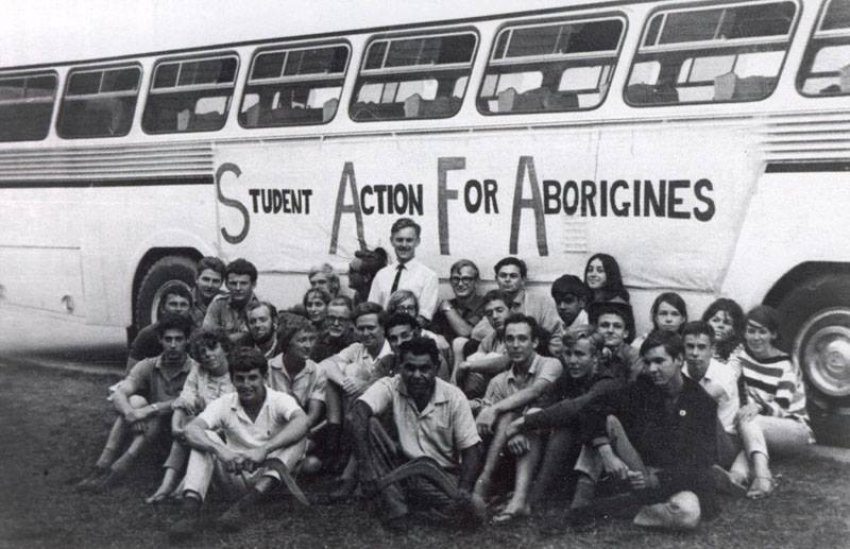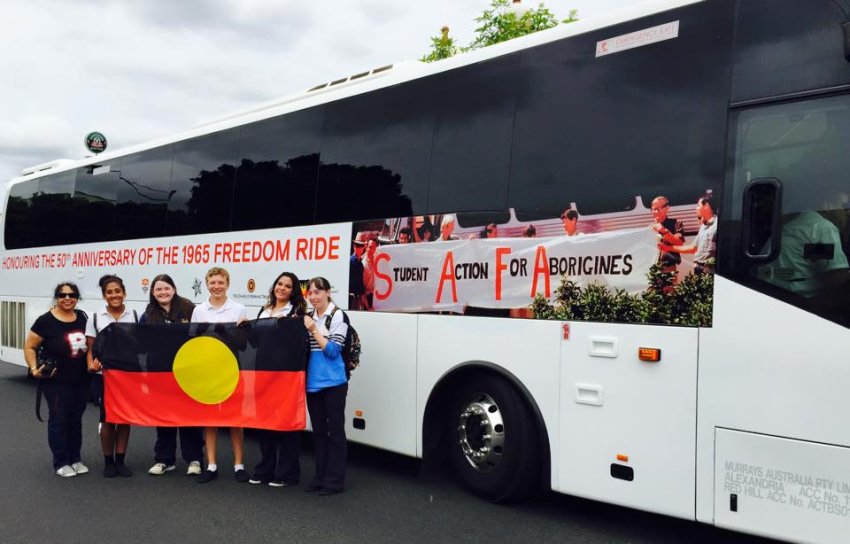
A busload of students, Aboriginal activists and musicians embarked on a commemorative trip around regional New South Wales on February 19 to mark 50 years since the first Freedom Ride. Also on the bus were 15 of the original Freedom Riders, filmmaker Rachel Perkins, and musicians Troy Cassar-Daley and Paul Kelly.
The bus will go to regional areas of NSW visited by the original Freedom Ride.
The original Freedom Ride occurred when Charles Perkins, an Arrente man from Alice Springs and a Sydney University student, was elected President of Student Action for Aborigines in 1964. Perkins, with 30 university students, set out to draw attention to the segregation of Aboriginal people in regional towns. Aboriginal people were being pushed out of common public areas such as swimming pools, RSL clubs and theatres.
The Freedom Ride created controversy in towns such as Walgett, Moree, Bowraville and Kempsey, where non-Aboriginal locals were angered by having their views on segregation challenged. The racism from the white people in these towns highlighted to the students and the broader Australian public the challenges that Aboriginal people faced when it came to segregation and discrimination in a land that belongs to them.
The Freedom Ride played a strong part in passing the 1967 referendum, which removed negative references to Aboriginal people in the constitution.
Now, University of Sydney students led by the Student Representative Council President, Kyol Blakeney, are recreating the journey by returning to the same towns. The tour is a celebration of the achievements of Aboriginal people and recognises that struggles for Aboriginal rights continue.
Anne Curthoys, an original freedom rider, said the aim of the journey was “to mark the anniversary of the original Freedom Ride by listening to the concerns of Aboriginal people in those towns, and beyond, right now”.
This year there has been renewed efforts for Aboriginal rights and land rights. Tent embassies in Canberra and Redfern are withstanding constant attacks from the government and police. The ongoing NT intervention and numerous attacks on the Racial Discrimination Act by federal politicians make the Freedom Rides just as relevant today as they were in 1965.
students-commerorative-freedom-ride-2015.jpg

Comments
Workers BushTel... replied on Permalink